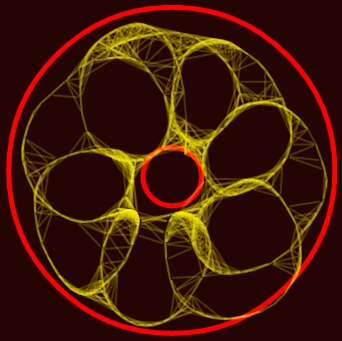Life in the Cell Begins at the Edge of Death, Part 5
Part 5: The Origins of Understanding Food, Fuel, and Metabolism
One of the biggest difference between modern and past scientists comes down to language and terminology. Modern writers and scientists fail to effectively teach essentials of nutrition, exercise science, and metabolism because virtually 100% of modern authorities learned to define and describe ‘aerobic metabolism’ or ‘cellular respiration’ in terms that provide no context for ‘combusting’ food – in the way a human recognizes combustion – as in burning a chunk of coal, wood, or milk fuel in a fire.
Rather than expressing metabolism of food in terms of how it resembles combustion, authoritative sources depressingly describe it using the following terms and phrases: “is a physiological process that requires oxygen to be available“, “produces 34 moles of ATP”, electron acceptors, TCA or citric acid cycle, NADH, etc, blah, blah, blah.
As a result of language itself, modern educators and students learn in ways so deep within the rabbit hole that both no longer relate to or understand much about the essential nature of food, health, and human performance.
In comparison to the modern scientist and gurus – past masters, like this guy, W.O Atwater did express nutritional physiology and metabolism literally in terms of making fire, for example, by saying ‘combustion of food’, ‘carbon balance’, ‘fuel value’.
Atwater conducted the ‘1906 Man on Bike’ experiment. It was considered the ‘dream project’ of the 19th century and was perhaps the most expensive privately funded science experiment in the history of the U.S until putting a man on the moon. Atwater worked with another guy named Francis Benedict – a physiologist and magician. Benedict made the CO2 collection masks worn by humans, mice, elephants and other animals – and it was he who actually finished Atwater’s ‘1906 Man on Bike’ experiment – after the latter suffered a stroke.
Down the road as you speak with others, you will see how modern lingo conditions and prevents people from learning a concrete sense of how the body works. Additionally, you’ll see how the terms sports nutrition, functional-nutritional-medicine, holistic nutrition, and whatever else term used to describe nutrition or metabolism all mean the same thing when you just know how the body works.
Review Main Points of Define Aerobic Metabolism Concretely
- Blowing onto a fire or deciding to move your body faster – increases the rate of combining O2 with fuel. This increases the production of CO2 gas, water, and heat from an actual fire, you, or the 1906 biker dude. Every part of the reaction increases or decreases relative to intensity level. e.g. fuel, O2, CO2, H2O, Heat… and fatigue.
- At rest, all the cells of your body combine small amounts of both oxygen and fuel and so it follows that smaller amounts of CO2, Heat and Water get produced. It seems someone in the past thought, “Let’s call the resting rate of metabolism 1″ – or 1 met.“
Additional points of the ‘Oxygen Consumed’ or VO2 Graph:
- The amount of O2 ‘consumed’ at idle in all humans at rest is called 1 MET – which stands for 1 Metabolic Equivalent. That’s the spot where the red dot is – at idle. However, everyone idles at a different rate – and so uses a different amount of O2 and fuel at rest – but the average human uses about 1/3 liter O2 per min. (Simple math says 2 Mets = 2/3 liter O2 per min and 3 Mets = 1 liter/min.)
- A volume of oxygen consumed graph or VO2 graph shows you only ONE element (O2) used relative to your intensity level. It ignores the relationship between O2 and food/fuel and additionally ignores the production of body heat, CO2, and water.
- It is easier to imagine aerobic power and metabolism in terms of how ‘smaller fires’ produce some power, heat, and CO2 while a larger fire produces more of the same… no? It’s definitely more of an integrated way of thinking. From this perspective, it would be interesting to quiz people and see how many know the whole picture of metabolism.
Watch another spectacular example of how increasing the rate of combining fuel and oxygen causes the increase of power and heat output…
…in this video of a man pouring liquid O2 onto charcoal briquettes.
- Using liquid oxygen concentrates or forces even more O2 to contact and combine with fuel, resulting in greater explosiveness, power, and heat.
Next Part 6: Metabolism at the Atomic Level… Burning Carbon is IT


